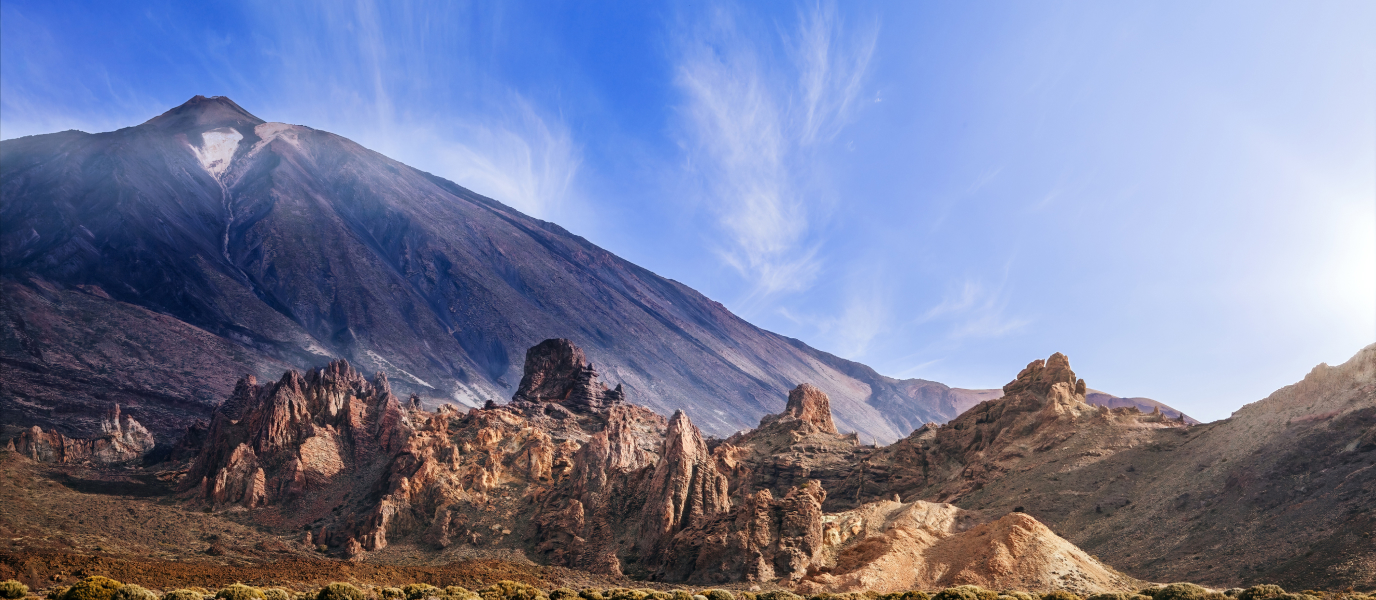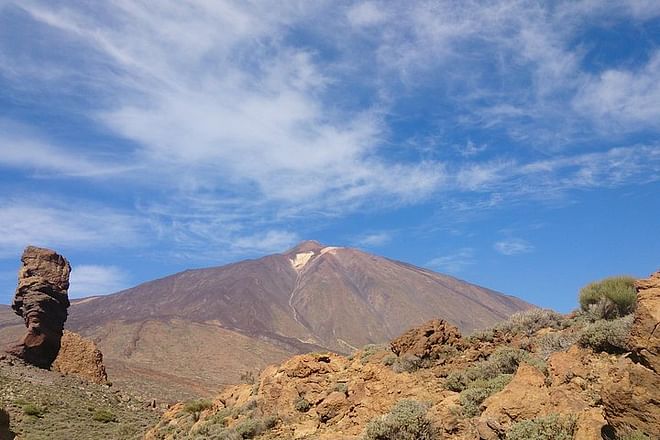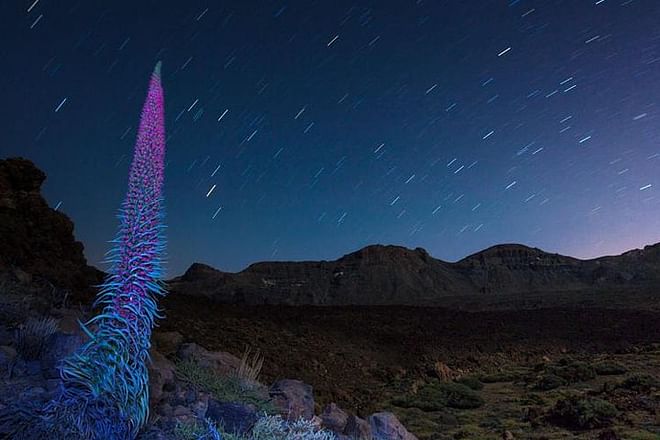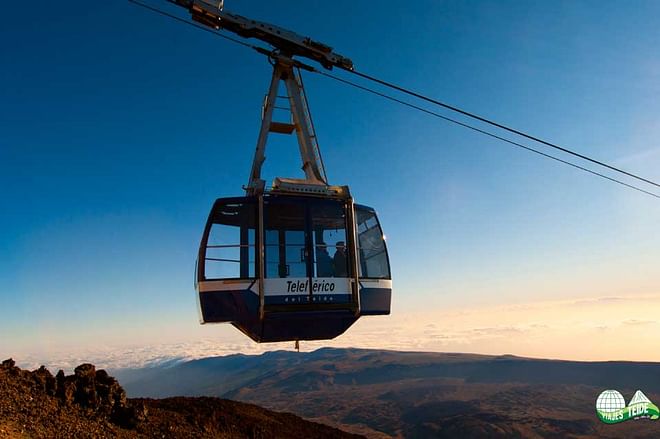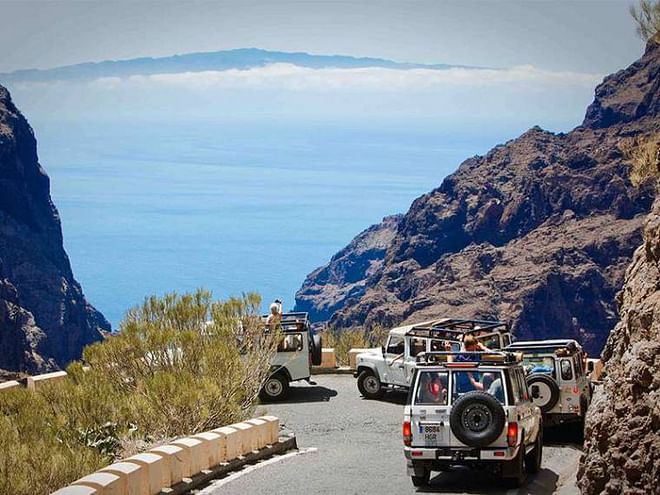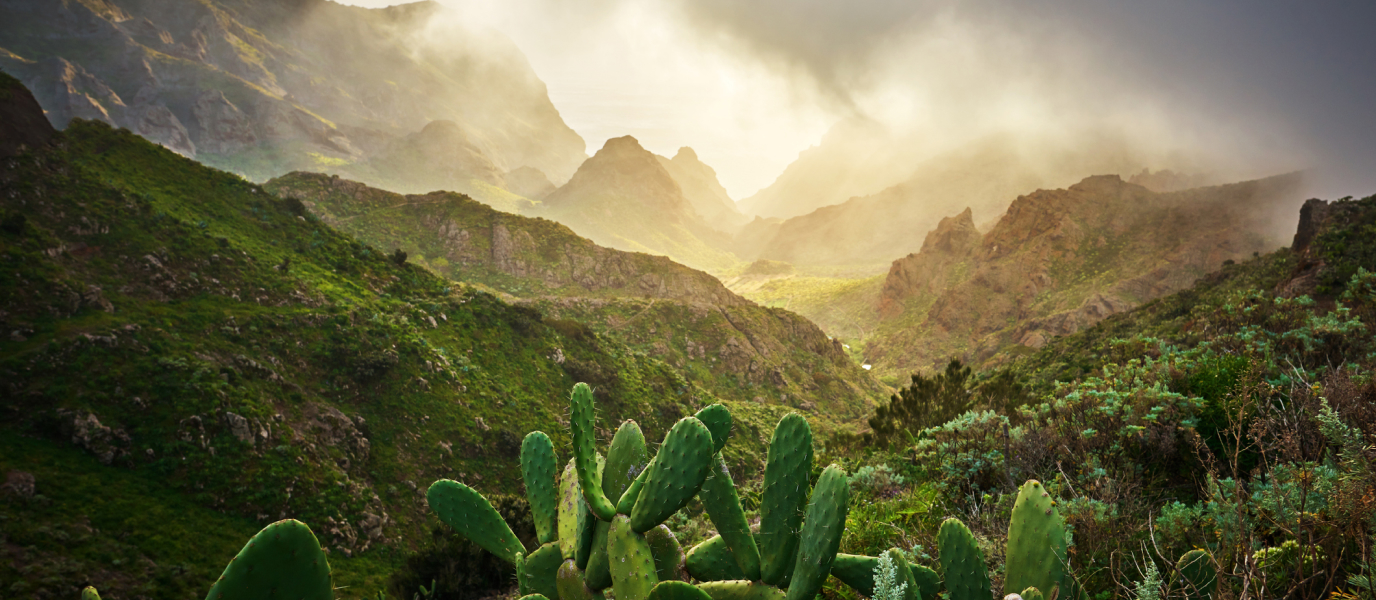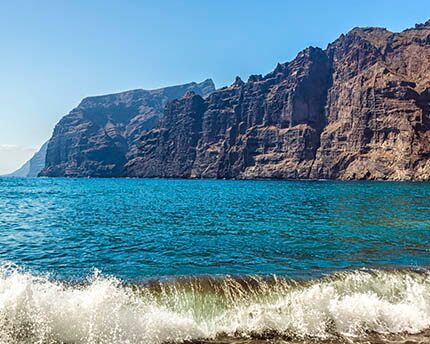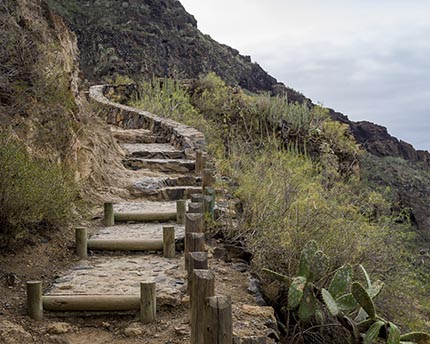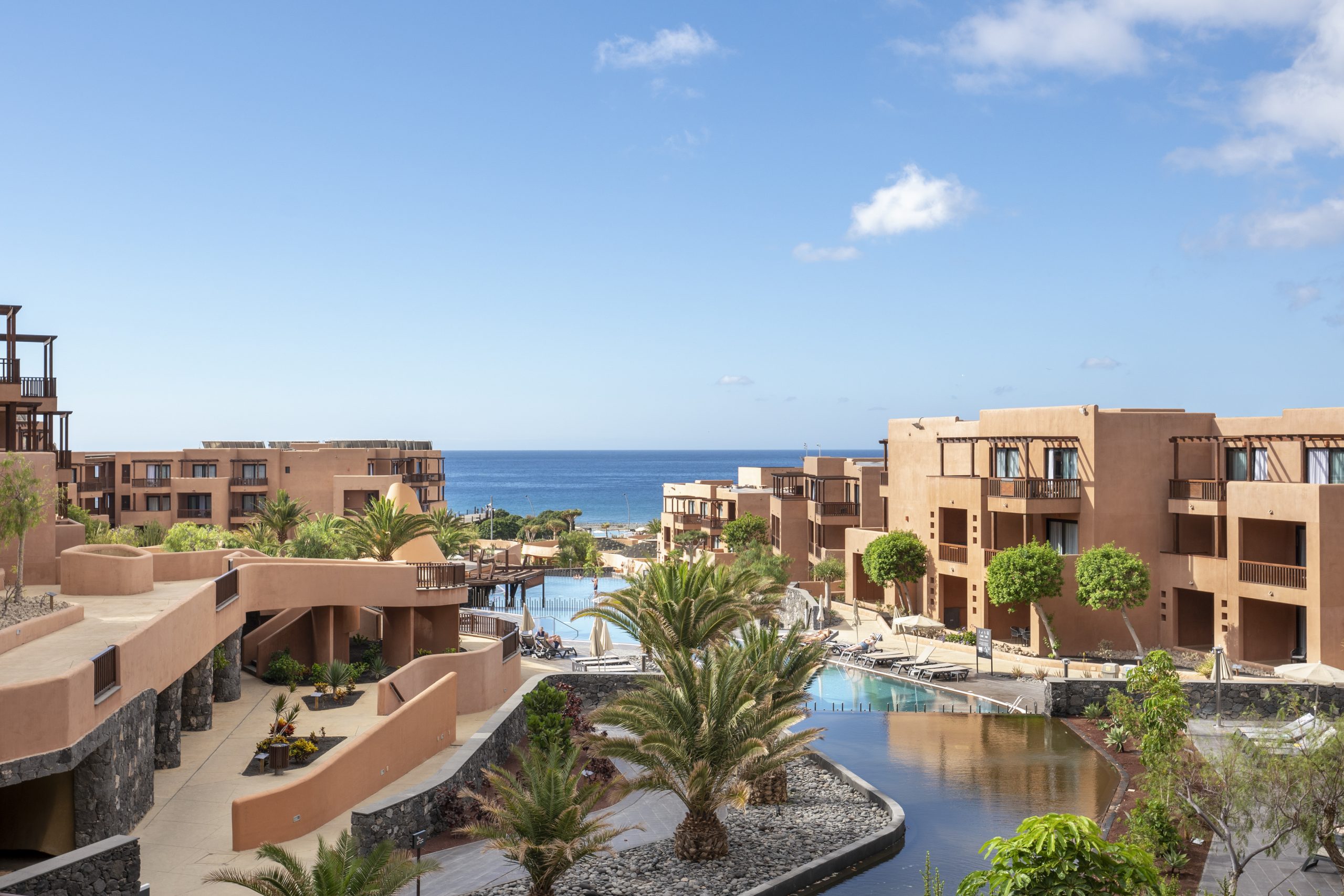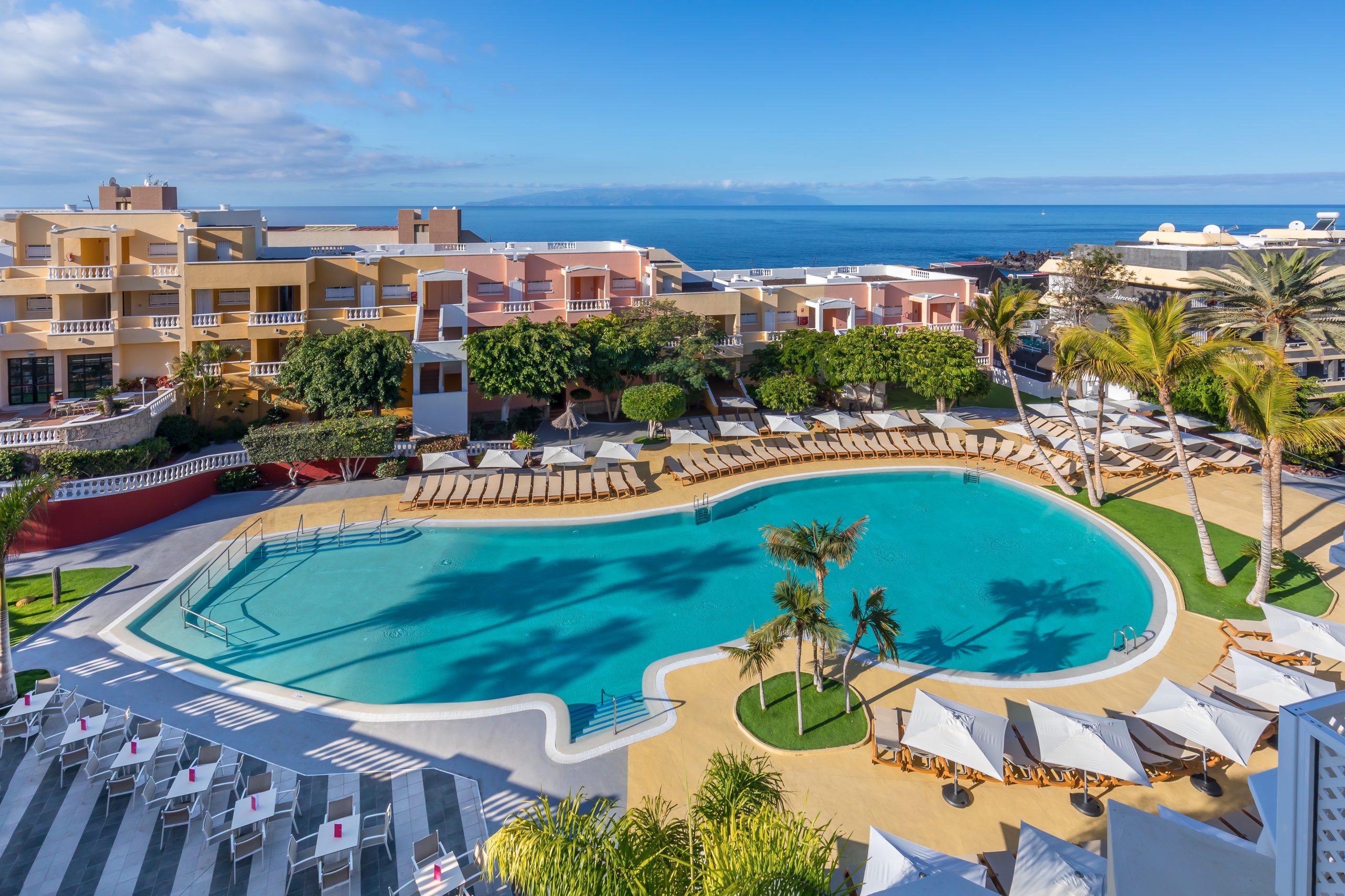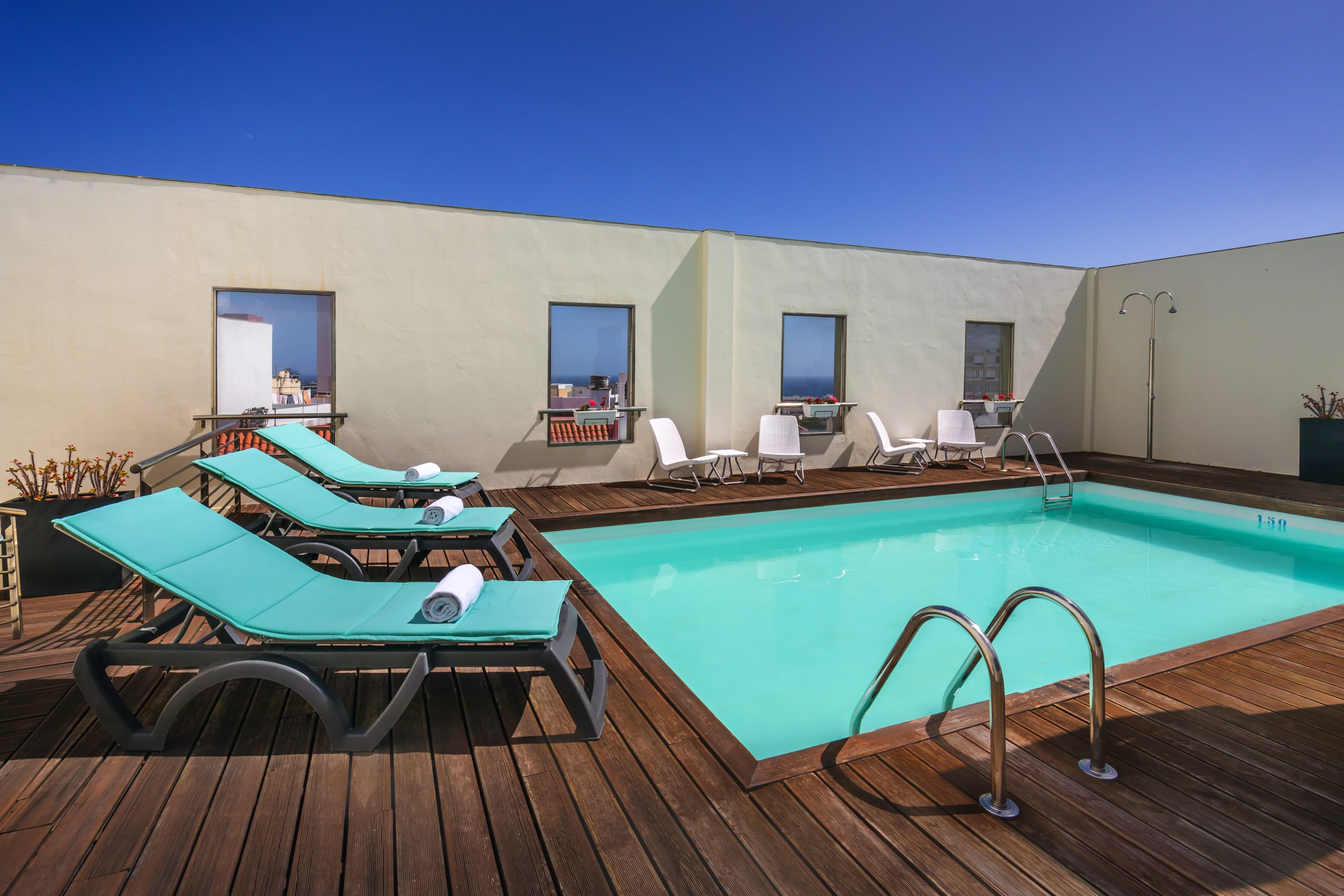With a height of 3,718 metres, Mount Teide, the third largest volcanic structure in the world, watches over Tenerife like a guardian of the island, as a symbol of the force of nature. It is the highest volcano in Spain and is visible from anywhere in Tenerife. Even the inhabitants of the neighbouring island of La Gomera can admire its elegant and imposing silhouette. Also, it is the real protagonist of the Teide National Park, which was declared a World Heritage Site by UNESCO, in the ‘Natural Site’ category, in 2007.
Related experiences
Mount Teide volcano, the park’s undisputed star
Created in 1954, Mount Teide National Park is located in the heart of Tenerife and comprises, in addition to the tall peak, a large caldera known as Las Cañadas del Teide. Mount Teide is accompanied by Montaña Blanca and Pico Viejo (or Montaña Chahorra). It is a young volcano that is just 600,000 years old and it is said that from the top you can see the other Canary Islands.
The park covers nearly 19,000 hectares, with a maximum diameter of 17 kilometres in the shape of a caldera, and boasts unique vegetation. The most singular among the 139 recorded Teide National Park’s flora species is the high floral spike of red bugloss, which has become the symbol of the park and has been captured in numerous photographs with Mount Teide in the background. In fact, it can reach up to three metres in height and its root was used by the Guanches to dye hides. Only three tree species grow in the park: the Canary Islands juniper, the Canary Islands pine tree and the Canary Islands willow.
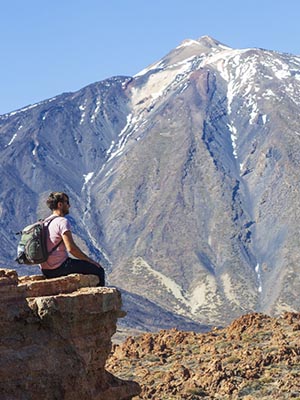
The fauna of the Teide National Park is very difficult to observe, although if you pay attention, you can spot the Gallot’s lizard, endemic to the western Canary Islands; the North African hedgehog, the common kestrel or the sparrowhawk.
One thing you cannot miss is the spectacular landscape and scenery of great beauty, which is why a visit to Mount Teide is a must on any trip to Tenerife. It seems that the last eruption of the volcano was in 1492 and it is believed that Christopher Columbus himself may have observed it from La Gomera.
Excursions to Mount Teide National Park
Historically, Mount Teide has attracted great explorers and travellers eager to reach its summit, such as Feuillée (1724), Edens (1751), Heberden (1752), Borda (1776), Macartney (1792), and Humboldt, to name just a few. Today, four million people come to the park every year, usually for a day trip. And many of them make it to the Teide crater.
Below you will find some of the many options to enjoy the Teide National Park:
Teide Cable Car
The Teide cable car is open from 9:00 AM to 5:00 PM. It departs from the base of the volcano, located at 2,356 metres, and goes up to La Rambleta, at an altitude of 3,555 metres, from where you can continue ascending to the summit of Mount Teide on foot. Please bear in mind that a special permit from the park’s authorities is required to access the crater. The Teide cable car was inaugurated in 1974. The journey lasts 8 minutes and crosses the corridor called La Corbata del Teide [the Tie of Mount Teide], offering a beautiful panoramic view of Las Cañadas. At the end of the ride, a spectacular viewpoint awaits you.
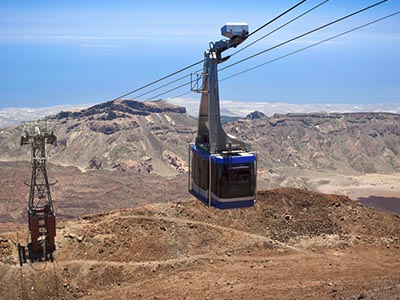
Hiking around Mount Teide
There is a network of hiking trails around Mount Teide, so there are multiple possibilities to walk through the territory overseen by this volcanic giant. The longest route is the one that surrounds the peak and runs through different cañadas (former cattle routes). Although you can start the hike anywhere, we recommend starting at the El Portillo visitors’ centre. The walk can take hours, but it is worth it because it allows you to discover each side of Mount Teide, as well as its secondary volcanoes (Montaña Blanca and Pico Viejo—or Montaña Chahorra—etc.). You will cross spectacular black lava fields, in the middle of an astounding silence that is only broken by the wind or by the singing of some birds.
Visiting Mount Teide
Only expert hikers can plan the ascent to the summit of Mount Teide, because the experience is challenging. You can spend the night (upon prior arrangement) at the Altavista Mountain Refuge, located at 3,270 metres, and sleep under the stars and with a sea of clouds at your feet. Let’s not forget that the sky over the Canary Islands is considered a privileged spot for stargazing. Which is one of the reasons why the facilities of the Canary Islands Institute of Astrophysics (or IAC) and the Teide Observatory are located here.
Climbing the Montaña Blanca
An easier excursion is following the trails up to the Montaña Blanca or completing the Huevos del Teide [Teide Eggs] route, dotted with large black balls of volcanic rock, which were expelled from the volcano during its last eruptions. You can also walk along the so-called Roques de García—vertical monoliths which can be found next to the Parador de las Cañadas del Teide hotel.
What to see in the Teide National Park
Cañada Blanca Visitors’ Centre (Parador Nacional de las Cañadas del Teide). It is located to the side of the hotel and is open every day from 9:00 AM to 4:00 PM. Here you will find information about the relationship between man and nature, and the wealth of the National Park. You can also book free guided walking tours to climb Mount Teide. The hotel has a cafeteria-terrace facing the volcano from which you can behold a breathtaking landscape. There’s another visitors’ centre in the park—Portillo de la Villa—which has the same opening hours.
Botanical Garden. It occupies a 4-hectare plot next to the Cañada Blanca visitors’ centre and was created to exhibit, research and reproduce the native flora of the national park. In fact, specimens of 75% of its species can be found here. Some of them, like the famous Teide violet, do not adjust to the climate, as they need a higher altitude.
Roque Cinchado. This rock—or rather remnants of volcanic materials moulded by erosion—also known as Árbol de Piedra [Stone Tree], is a monolith carved in volcanic stone. It has become an emblem of the park, being one of the most photographed elements with Mount Teide in the background.
Caution: Visitors must not stray from the marked paths nor leave the signposted areas in the national park. Failure to observe this rule may have very serious consequences for this giant carpet of volcanic ash.





























































